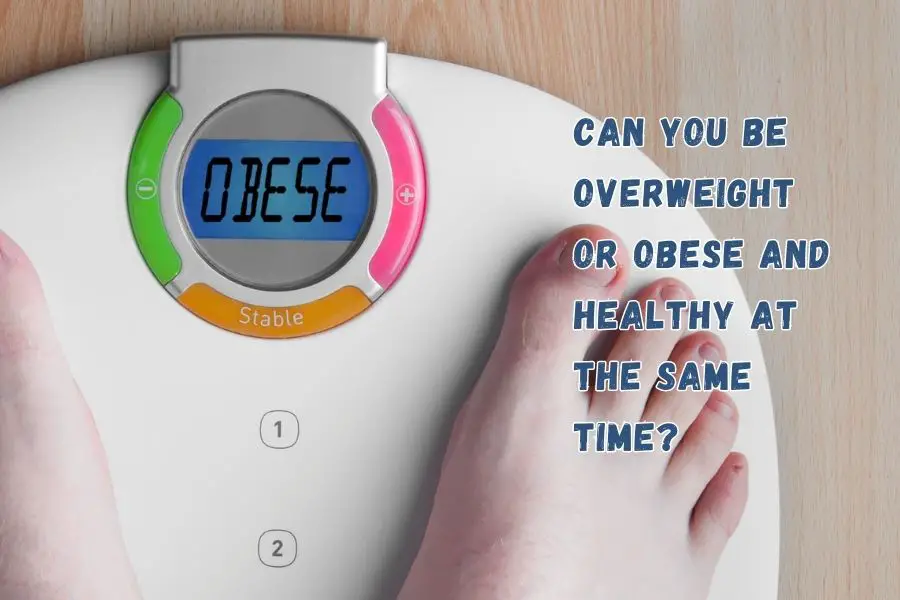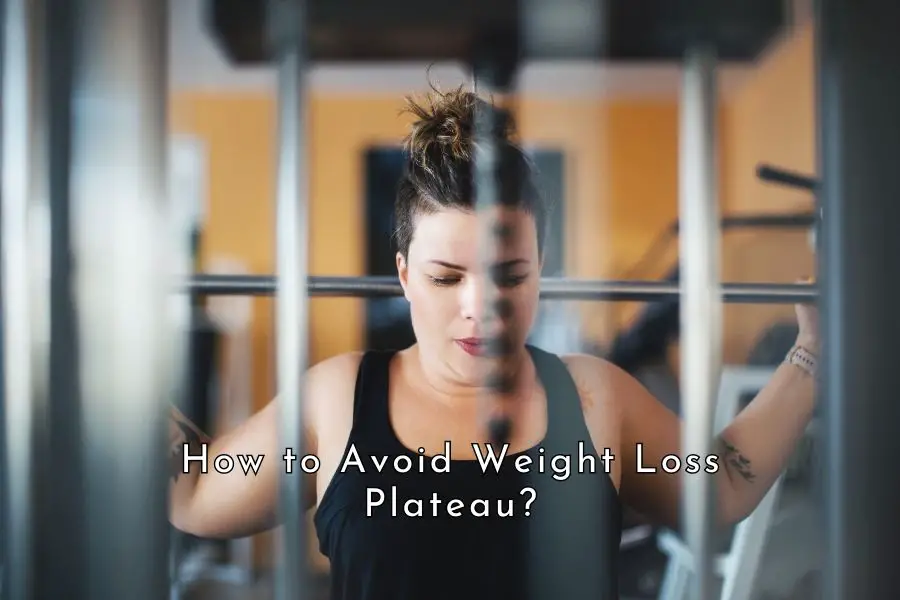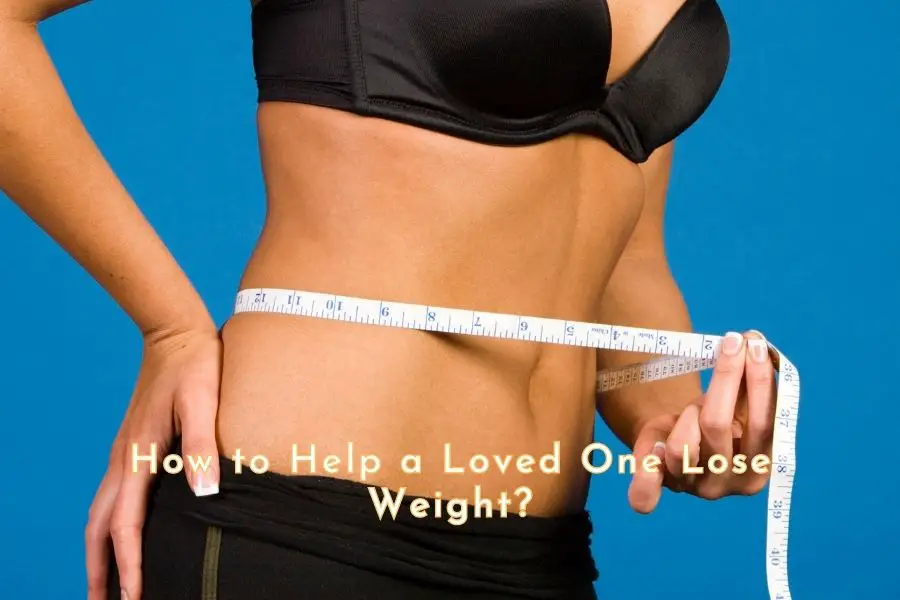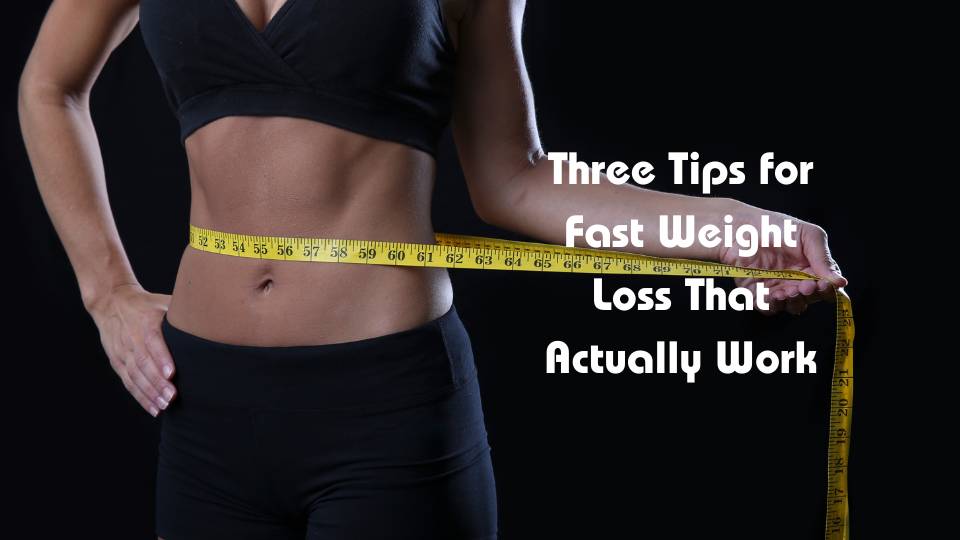There are people who are in the overweight or obese categories and don’t seem to have any apparent health problems. Can you be obese and healthy at the same time? Is there such thing as healthy obesity?
While we should all embrace different body shapes and sizes, available evidence suggests that it is generally not possible to be obese and healthy at the same time. In the long term, obese people who show no metabolic abnormalities still face a significantly higher risk of dying or developing cardiovascular diseases compared to people in the healthy weight range.
By all means, practice body positivity. Love your body with all its flaws and amazing abilities, it is the only one you will ever own.
However, at the same time, it does not mean that you shouldn’t do anything to improve your health, for yourself and for those you care about. If you are either overweight or obese, definitely please actively look at ways to shed the excess fat in order to improve your health and wellbeing.
In the remainder of this post, we will first look at assessing your weight to determine whether you are overweight or obese and then look at the available evidence on the health status of people who are either overweight or obese.
How to tell if you are overweight or obese?
Some of you may already know whether you are overweight or obese. However, some of you may live in a family or environment where large body sizes are the norm, don’t usually weigh yourself, and are not sure whether your body weight is normal or not.
If you want to find out, there are two ways, one is to use the body mass index and the other is to use waist circumference.
Using body mass index
The body mass index (BMI) is calculated as your weight in kilograms divided by the square of your height in meter (kg/m2). Here is a link to a BMI calculator.
If your BMI is between 25 and 29.99, you would be classified as being overweight.
If your BMI is greater than 30, you would be classified as being obese.
A detailed BMI classification by the National Institute of Health and used by the CDC is set out below. [1, 2]
| Classification | BMI (kg/m2) |
|---|---|
| Underweight | < 18.5 |
| Normal weight | 18.5-24.99 |
| Overweight | 25.00 – 29.99 |
| Obese Class I | 30.00 – 34.99 |
| Obese Class II | 35.00 – 39.99 |
| Obese Class III | ≥ 40.00 |
However, it should be noted that while the BMI is a simple and helpful indicator of the health status for many people based on weight, it is not accurate for some because it does not take into account a person’s specific body composition, for example, the percentage of fat, bone, and muscle in your body.
Using the BMI alone, some athletes with an extremely low level of body fat and a high level of lean muscles (which are much heavier than body fat for the same volume) could be considered as being overweight. Likewise, some people with a BMI in the normal weight range could have an unhealthy level of body fat due to a low percentage of lean muscle mass.
Using waist circumference
Waist circumference is an indicator of the level of unhealthy fat deposit around the abdomen.
To get an accurate measure of your waist circumference: [3]
- Measure on bare skin without clothing
- Place a tape measure around your middle, just above your hipbones
- Make sure the tape is horizontal around the waist
- The tape should sit neatly against your skin but is not too tight that it compresses the skin
- Stand up straight, inhale then fully exhale, then take measurement.
If you are a man with a waist circumference of more than 40 inches or a non-pregnant woman with a waist circumference of more than 35 inches, you are likely to be obese and face greater risks of developing obesity-related health problems. [4]
Below is a table detailing different waist circumference ranges and their associated levels of health risks. [5]
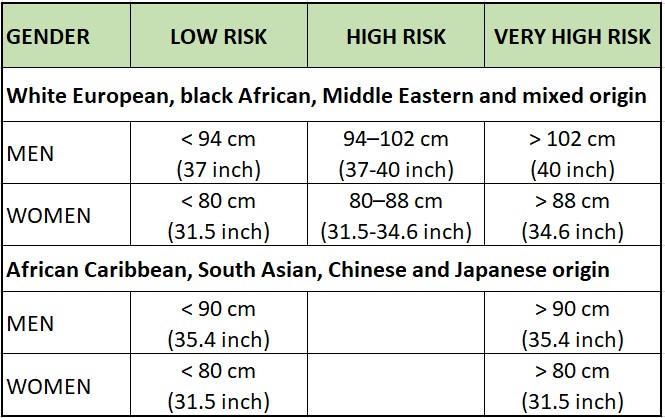
In summary, you are obese if your BMI is greater than 40. If your waist circumference is more than 40 inches (for a man) or 35 inches (for a woman), you will face higher obesity-related health risks.
Can you be obese and still healthy?
There is a myth going around in recent years that you can be obese and still remain healthy at the same time. However, research indicates that this is not true at all.
In a meta-analysis of 8 prospective studies with a follow-up of 10 years, Kramer et al (2013) found that metabolically healthy obese adults had increased incidences of all-cause mortality and cardiovascular diseases at some stage in their lives. [6]
In simple terms, if you are obese but yet to show any metabolic syndromes, in the long term, you will have a significantly higher risk of dying or developing cardiovascular diseases compared to people who are in the healthy weight range.
Compared with metabolically healthy normal-weight individuals, obese persons are at increased risk for adverse long-term outcomes even in the absence of metabolic abnormalities, suggesting that there is no healthy pattern of increased weight.
Kramer et al (2013)
In a study that followed seemingly healthy obese individuals over the course of 20 years, Bell et al (2015) found that: [7]
- 32% were unhealthy obese after 5 years,
- 41% were unhealthy obese after 10 years,
- 35% were unhealthy obese after 15 years, and
- 52% were unhealthy obese after 20 years.
In other words, healthy obese adults were found to naturally transition to unhealthy obesity over time.
In fact, the study found that, over a 20-year period, healthy obese adults were nearly 8 times more likely to progress to unhealthy obesity than healthy non-obese adults.
In summary, there is no such thing as healthy obesity. If you are obese and presently have no apparent health problems, you have a higher risk of facing health problems later on in life compared to those in the normal weight range.
The section below provides a summary of the major health risks associated with being overweight and obese.
Risks associated with being overweight and obese
There are many serious health risks associated with being overweight and obese. Below is a brief summary of the major risks. [8, 9, 10]
Coronary heart disease
Coronary heart disease refers to the narrowing of the arteries that supply blood and oxygen to your heart. This happens through the building up of fatty material (plaque) in your blood vessels over time which makes the blood vessels become narrower.
Insufficient blood and oxygen supply will prevent your heart from functioning normally. If this supply does not meet demand at some heart muscle, there can be a heart attack. Coronary heart disease is a leading cause of death in many developed countries.
It is estimated that the risk of developing coronary heart disease increases 3.6 times with each unit change in BMI.
High blood pressure
Blood pressure is the force of blood pushing against blood vessels. High blood pressure or hypertension is a condition where your blood pressure is elevated and your heart needs to work harder to pump blood through blood vessels. High blood pressure is a major risk of stroke, heart attack, heart failure, and other serious diseases.
It is found that 85% of high blood pressure cases are associated with a BMI greater than 25. Obese people also have a 5 times higher risk of having high blood pressure.
Type 2 diabetes
Type 2 diabetes is a metabolic disorder where your body’s ability to convert sugar to energy is significantly impaired. Your body produces insulin to help channel glucose in the bloodstream to cells. In people with type 2 diabetes, their body either produces insufficient insulin or the body cells are resistant to the effects of insulin.
There is a strong correlation between obesity and type 2 diabetes, a much higher percentage of obese people suffers from diabetes than people in the normal weight range.
Gallstones
Gallstones are small pebble-like stones that form in the gallbladder. The presence of gallstones in the gallbladder may cause acute cholecystitis and obstruction of the bile ducts which can lead to serious conditions. Gallstone risk factors include overweight, gender (female), age (over 40), and race (more prevalent in Caucasians than other races).
Some types of cancers
Cancer involves the uncontrolled growth of cells forming malignant tumors. There are various known cancer risk factors including smoking, radiation, poor diet, inactive lifestyle, obesity, and environmental pollutants.
Researchers have found convincing evidence that excess body fat causes a number of common cancers involving endometrium, breast, pancreas, colon and rectum, gallbladder, kidney, and esophagus. Ten percent of all cancer deaths among non-smokers are related to obesity (30% of endometrial cancers).
Infertility
Obesity is a major cause of infertility in both men and women.
Impotency and infertility are frequently associated with obesity in men. Obese men are more likely to have lower sperm quality and lower levels of testosterone and sex hormone than men in the normal weight range.
Six percent of primary infertility in women is attributable to obesity. Obese women are more likely to suffer from ovulation disorder, have difficulty falling pregnant or carrying babies to full term. Obese women are also more likely to give birth to larger babies. Obese women may also pass on infertility problems to their female offspring.
Anxiety and depression
Researchers have found that obesity increases the risk of depression. There is a two-way link between obesity and depression in that obese people have a higher risk of suffering from anxiety and depression than people with a healthy weight. On the other hand, people with depression tend to have an increased risk of obesity.
Modern society generally associates being slim, fit, and athletic with being beautiful and attractive. On the other hand, being overweight and obese are often associated with being lazy, gluttonous, poor self-disciplined, and unattractive. Overweight and obese people are likely to face discrimination at the workplace, in schools, or in social situations. It is not surprising that feelings of shame, depression, or rejection are common among overweight or obese people.
Conclusion
Being fat, overweight or obese has got nothing to do with one’s character. I’ve met many wonderful people who are of all body shapes and sizes, from stick-thin to chubby, stocky, overweight, and obese. Beauty does come in all shapes, sizes, and colors.
However, it is a mistake to think that you can be obese and healthy at the same time. You might be one of the few extremely lucky ones and remain free of health problems for the rest of your life. But evidence indicates that, in general, you are more likely to develop health problems later on in life compared to those who are in the normal weight range.
As summarized above, there are many serious health risks associated with overweight and obesity. So, if you are currently in the overweight or obese categories, please do something about it. Losing weight is not easy, but you will succeed if you are committed to changing the status quo, don’t give up despite setbacks and failures along the way, and keep searching for the answer.
In my view, the best diet for weight loss is either a carnivore diet or a ketogenic diet. The low carb nature of those diets support fat burning and can help you lose weight effortlessly.
If you would like to start making some positive changes to your weight and health with a carnivore diet, please check out our four-part series on how to lose weight in a healthy and sustainable way and keep it off successfully.
If you want some quick tips for effective and healthy weight loss, check out the top 15 tips to lose weight fast with the carnivore diet.
Other posts you might be interested in:
The Best and Most Healthy Way to Lose Weight and Keep It Off
Three Science-Backed Strategies for Fast Weight Loss
How to Lose Weight Fast with the Carnivore Diet Part 1: Healthy Diet
How to Lose Weight Fast with the Carnivore Diet Part 2: Smart Exercise
How to Lose Weight Fast with the Carnivore Diet Part 3: Positive Mind
How to Lose Weight Fast with the Carnivore Diet Part 4: Action Time
How to Lose the Last Few Pounds on the Carnivore Diet?
How to Avoid Weight Gain During the Holidays
Disclaimer: The information in this post is for reference purposes only and is not intended to constitute or replace professional medical advice. Please consult a qualified medical professional before making any changes to your diet or lifestyle. Please check out our disclaimer for more detail.

